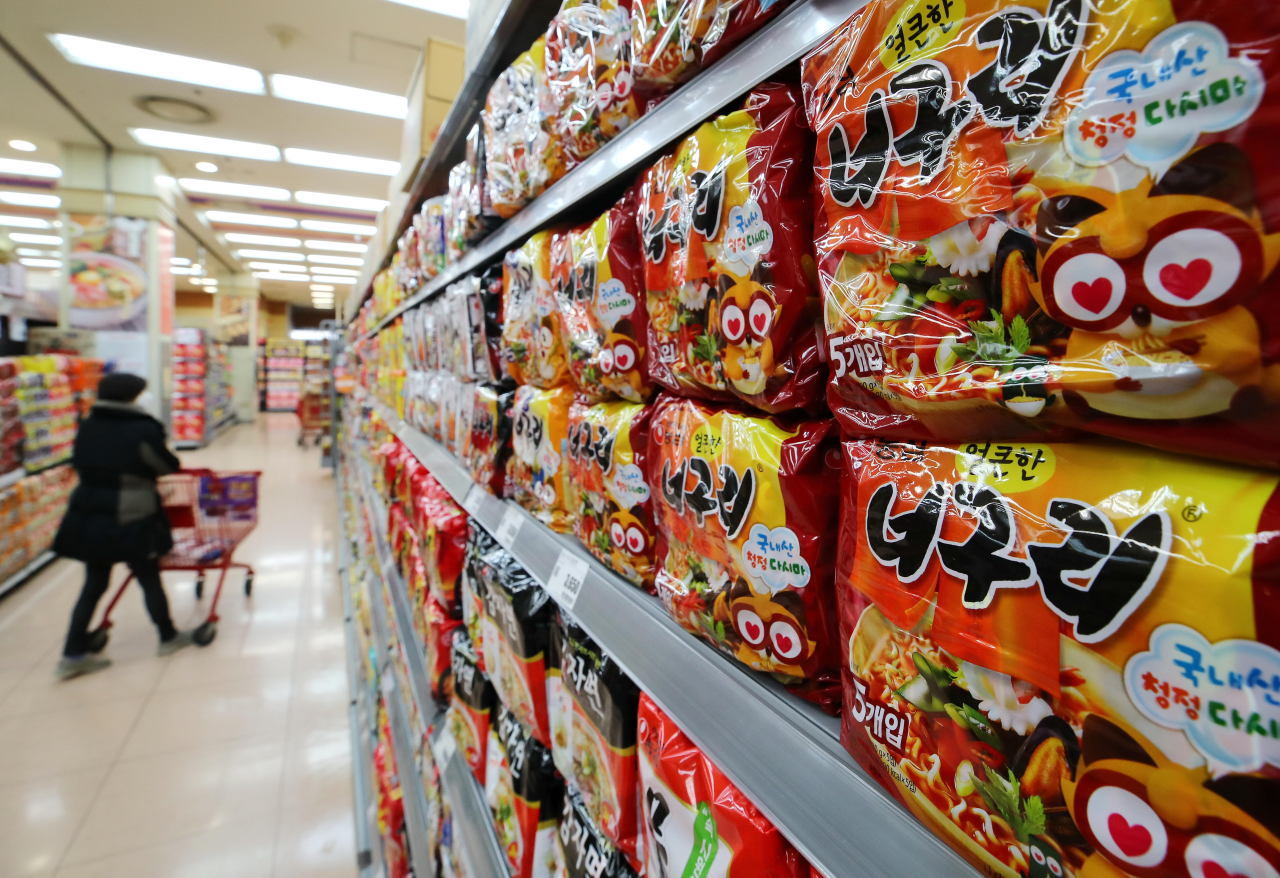
(Yonhap)
Prices of instant noodle products rose 11 percent from a year ago in October, the largest jump since 2009, leading an overall increase in food prices, government data showed Sunday.
According to the state-run Statistics Korea, ramen prices reached the highest on record last month, growing by the largest margin since February 2009, when the country saw a 14.3 percent growth in instant noodle prices.
The market’s four main players -- Nongshim, Ottogi, Samyang and Paldo --have all hiked product prices since August, citing increases in the prices of raw materials such as flour and palm oil. The wholesale price of the market’s longtime top seller Nongshim’s Shin Ramyun went up by more than 7 percent in August.
Government data showed that not just instant noodles, but also other flour-based products have seen steep prices hikes this year due to the higher international prices of grains.
Noodles as a whole -- not just instant noodles -- were 19.4 percent more expensive this year than last year, followed by biscuits (6.5 percent), pasta (6.4 percent), bread (6 percent) and snacks (1.9 percent).
Prices for processed food in Korea are projected to continue to grow, adding more upward pressure on inflation.
According to United Nations’ Food and Agriculture Organization data, the international food price index soared 3 percent in October from the previous month at 133.2 points. The 2014-2016 average was 100 points.
While grain consumption is on the rise globally, major exporters such as Canada, Russia and US saw less grain tonnage due to a lack of rain and mild temperatures, leading to price hikes. In October, the international grain price fell to 137.1 points, a 3.2 percent drop from September.
Market experts viewed the local consumer price index as expected to rise through the first half of 2022, considering South Korea’s high reliance on exported materials for food.
As of the end of last year, South Korea’s self-sufficiency rate on food came in at 45.8 percent, meaning that over half of the food consumed here came from outside the country. The rate on grains, including animal fodder, was 20.2 percent.
The South Korean government said it has been seeking measures such as simplifying customs clearance for grain products and financially supporting the local grain industry to boost local grain production.






![[Graphic News] More Koreans say they plan long-distance trips this year](http://res.heraldm.com/phpwas/restmb_idxmake.php?idx=645&simg=/content/image/2024/04/17/20240417050828_0.gif&u=)